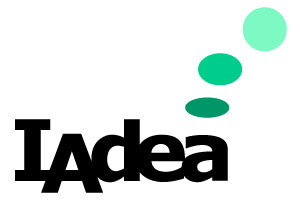Supporting corporate guidelines with a desk booking solution

As lockdowns gradually ease across the world, the top priority for businesses of all kinds is to ensure a safer return to the office for all employees. However, getting a handle on government-issued guidelines is a real challenge for businesses that want to make sure their offices are fully compliant, while accommodating the evolving world of work that demands more interaction and collaboration with colleagues.
The larger the organization, the more complex the implementation will be. One thing remains certain though: the processes and protocols of ensuring safety and limit to risk of contamination will have to be handled manually, at least at first.
Not only is this troublesome, but most often it is simply impossible to follow through completely. Humans are creatures of habit, and adapting to a new way of life demands structure and automation. The process of strategizing reopening, implementing guidelines, and executing and monitoring these is extremely complex and something a majority of businesses have never attempted before. But having a plan in place is a major step in the right direction to align entire organizations.
How to Automate and Ensure Safety in Three Distinct Areas
Throughout conversations with various organizations and businesses, we have gained deep insights and an understanding of the strategies being used for reopening, and how they vary dependent on each national governments’ roadmap out of lockdown. The recurring theme throughout all these conversations has been a safe return to the office for employees as a priority, and creating an office that is adapted to meet the needs of a post-COVID-19 world.
In helping you and your business with the transition from lockdown to an office ready to be safely used again, we have identified three key areas in which enforcements of guidelines can be automated:

Employee Capacity
Limiting desk space available for use

Social Distancing
Make every other desk unavailable for reservation

Avoiding A Race to the Office
Provide employees with the ability to reserve desks in advance
Employee Capacity Limiting

Through the various phases of reopening, many companies have implemented an employee capacity limit that can change with each phase. Deciding who can go to the office and when is decided by each departments’ respective team head. Monitoring of who is at the office and when, and then weekly or even daily reporting is done manually.
However, in reality, team leaders are busy navigating their own tasks and challenges, and emailing back and forth who can go to the office becomes near-impossible to keep track of. The solution proposed is a comprehensive booking system, which can automate said tasks, taking it off the hands of the department heads. This can be achieved through these three simple steps:
Step 1: Introduce a desk booking system. This should comprise two parts: initially the software part, such as Pronestor’s desk booking software: Workspace. Employees can easily use Pronestor’s web-based app to make a booking:
Booking a desk in action
The second part utilizes IoT, such as the IAdea Desk Booking System. Together they make a power couple ideal for systemizing desk bookings.

Sample integration
Step 2: Depending on where your organization is in its phased reopening, within the Pronestor software management dashboard, administrators can easily set a limit to the number of desks available for reservation.
Step 3: IAdea desk booking devices placed on desks can then help to enforce this limit once reached. Peripheral LEDs on the devices automatically switch to red (as can be seen below), clearly showing spaces are no longer available for booking.

The WDB-001 Desk Booking Device’s red LEDs mark space as unavailable
Access to desk space availability is always viewable via the Pronestor desk booking web-based app. Therefore, when the office is already at capacity, employees will not be able to reserve a space and be deterred from coming to the office and instead work from home
Social Distancing

Building on the concept of managing capacity, a way to ensure distance between employees is to make every other desk off-limits through marking it as unavailable for reservation through the software dashboard This can also overcome a potential unforeseen drawback of previous method of capacity limiting, whereby, even if seating is limited, employees could simply book desks all within close vicinity of each other, potentially increasing chance of exposure and presenting unnecessary risk.
Sure, you could of course manually measure the distance between the desks and move them around. But that can be complex and time consuming — and what will you do when social distancing goes from two meters to one? That work can be automated!
Avoid a Race To The Office and Travelling During Rush Hours

Where are they going to be seated? Will there be a desk available? When will their team mates be at the office? Did they remember to report to their team leader that they are going in? The most troublesome aspect may be using public transportation itself.

Find where team mates are seated and then book a desk nearby, all in the Pronestor web-based app
When facing these challenges, a desk-booking system can be your savior by enabling a system of desk hoteling. Through the Pronestor desk booking web-based app, spaces can be reserved well in advance to guarantee availability, free of colleagues and fully sanitized when they arrive. Users can also quickly look up their team mates’ bookings and find a free desk nearby so as to be able to collaborate. As well as individual bookings, one person can book on behalf of their whole team, so that they have adequate space for meeting and collaboration. Flexible time slots also allow more flexible commuting times, avoiding the rush hour.
Lastly, IAdea desk booking devices feature built-in NFC or HID card readers. Colleagues can simply tap their work-issued ID card over the device to check-in for their booking For organizations that have more rigorous reporting standards, this can save hours of manual data entry for team leaders, with data and statistics automatically fed into the HR system, for example, reporting who is in or out of the office.
Secondary Considerations for Flexible Seating Arrangements
With the main bases covered, organizations should be good to go. However, there are still extra precautions that can further enhance workplace safety:
- A clean desk policy whereby each employee should clear their desk of personal belongings at the end of each day
- Keyboard and mice are notoriously tricky to keep sanitary. Supplying a keyboard and mouse to each employee which they carry around with them as they move desks can be a solution, rather than the equipment being tied to the desk and shared between users. Devices can be stored in lockers at the end of each day (with lockers also able to be reserved in advance!)
- For organizations who may struggle with regular deep sanitization of desks after each user, enforcing a one-employee-per-desk-per-day policy can reduce risks of contamination.
This article was first published by Pronestor
Get back to work safely and successfully. Explore our Pronestor partner page now!

Download your free copy of our Return to Business Guide: 4 Steps Every Workplace and Campus Need to Know and Do Before Reopening
Complete the form to download this free enterprise solution guide…
In this solution guide, you will learn and have access to:
The 4 steps for organizations to safely reopen workplace: 1) Facility Safety Policies, 2) Bi-Modal Working, 3) Creating a Touchless Experience, and 4) Internal Communication System.
Look for the “Click to view the installation guide of this solution” in the integration diagrams to gain in-depth knowledge on how to deploy the solutions.
Credits

